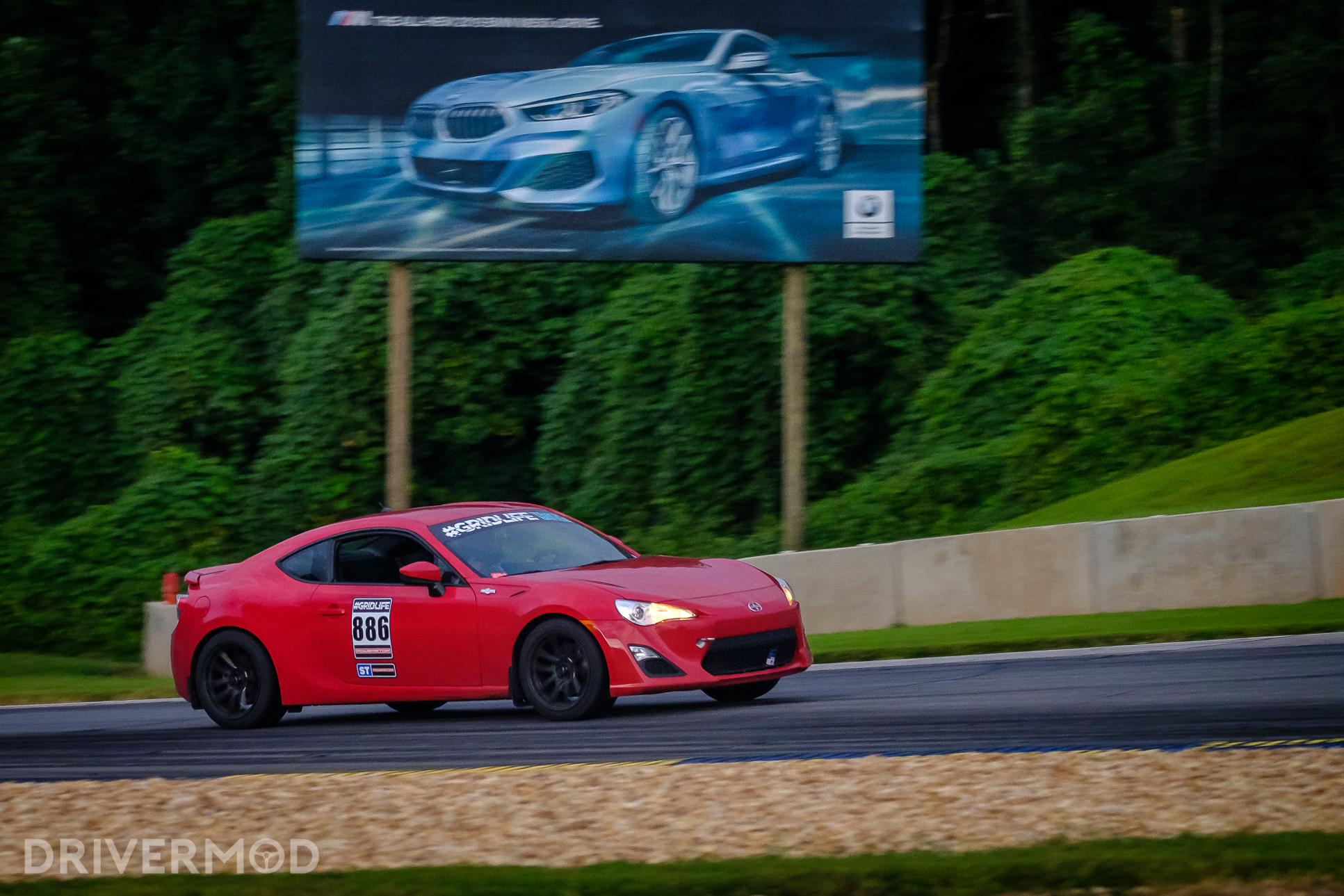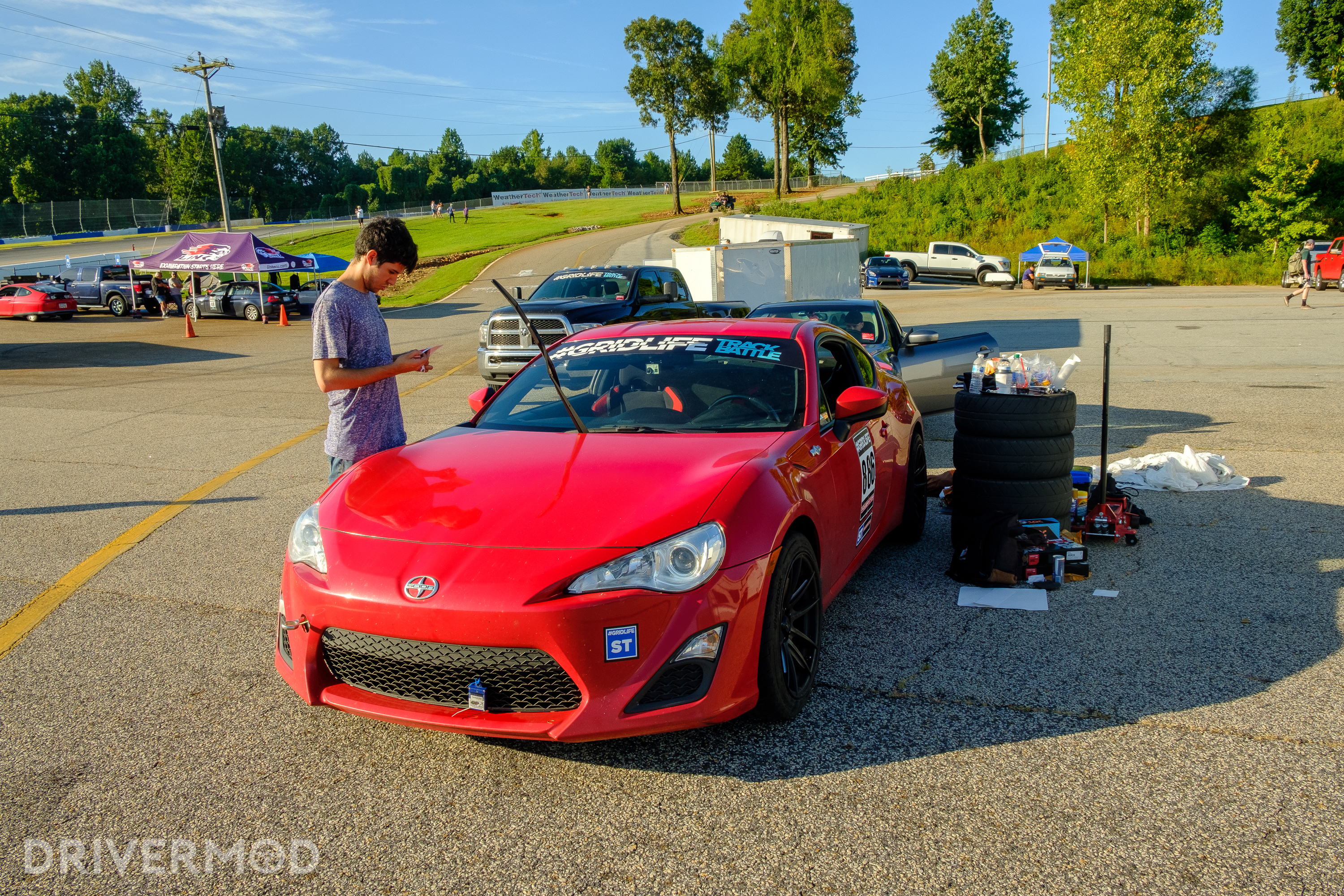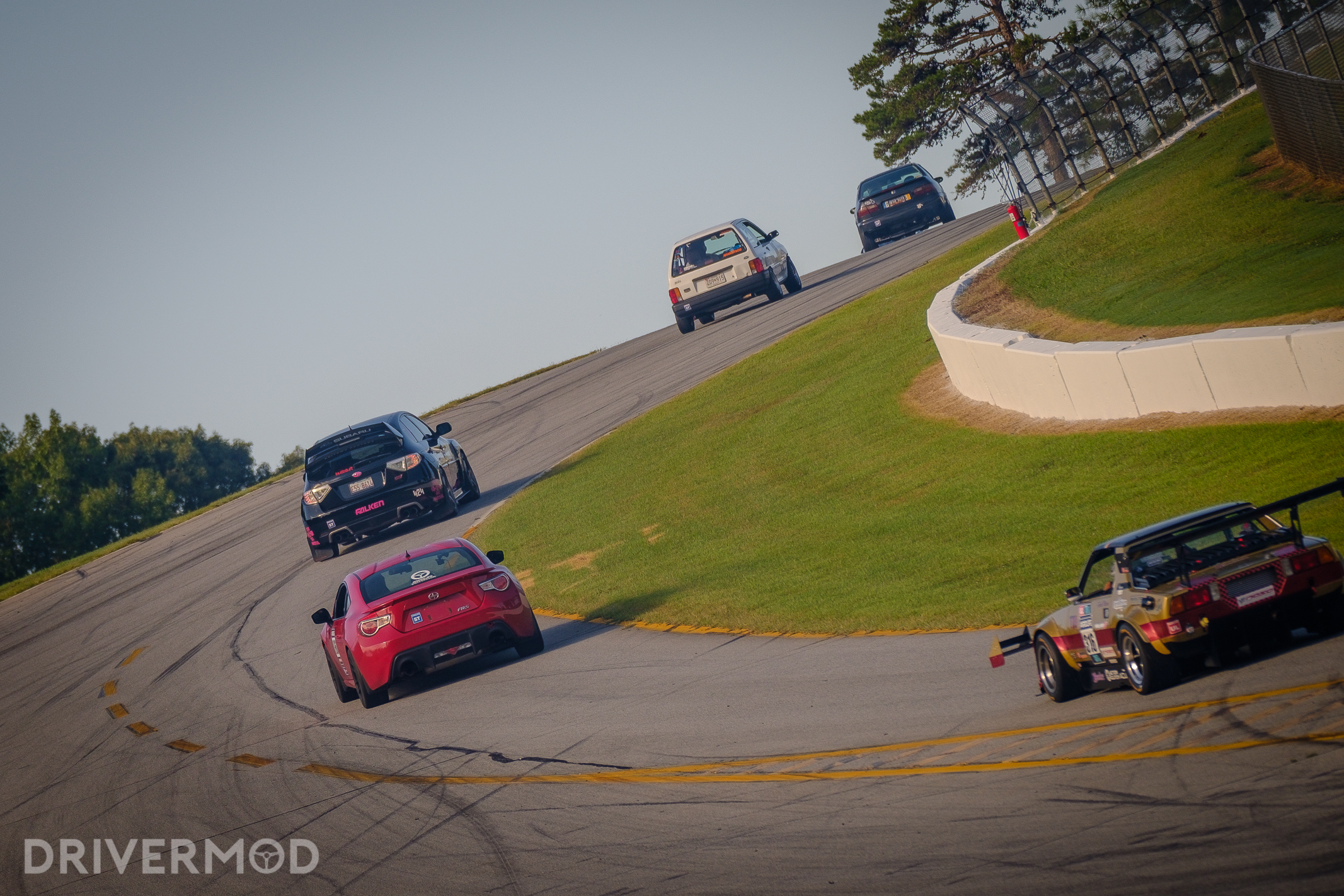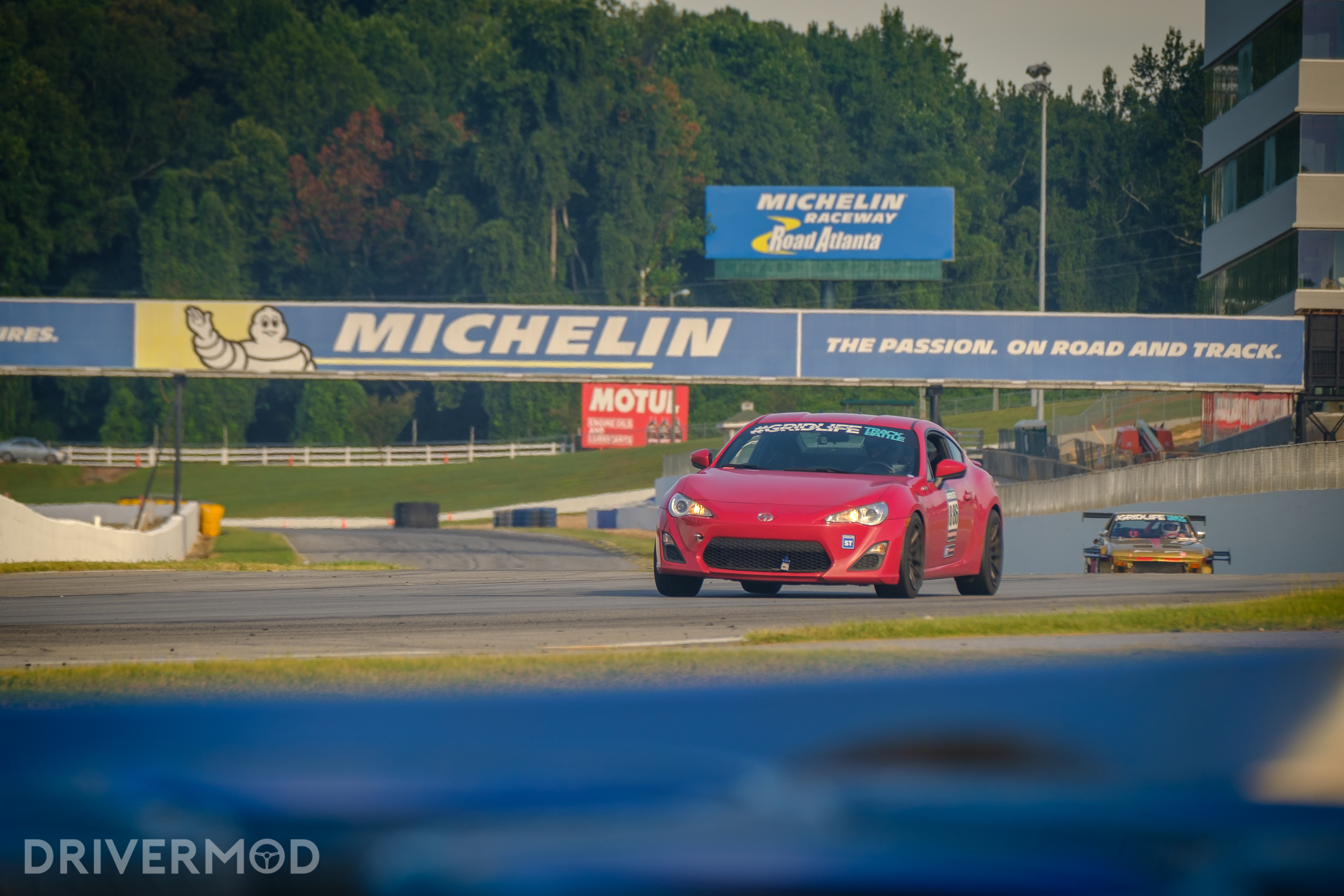I love racing. I cried in the movie Rush, the smell of roasted brakes makes my heart flutter, and a good track day can make the worst week vanish from memory; but I’m also not a trust fund kid. That means I need to live with one, inexpensive car. If I ever wrecked said inexpensive car, it would hurt. That means I spend a lot of time thinking about risk. Drifting is out of the question; same with ice racing, rally-cross, rally racing, and anything else that involves a high likelihood of crashing. Until recently, that’s also meant avoiding any really fast track driving.
I’m also a firm believer that you need to place yourself in uncomfortable situations in order to grow, and recently that’s meant speed. Small, technical courses are forgiving; upsetting a car at 80 kph and 180 kph result very different consequences. High speed courses require the utmost smoothness — dialing in steering, modulating the brake pedal, squeezing the throttle coming out of corners.
The scale of Road Atlanta is breathtaking; impossible to describe using letters on a page but I’ll try my best.
That’s how we ended up at Road Atlanta. We’ve been attending Gridlife for a few years now and last year I felt like a fool for making the sixteen hour trip south to not drive Road Atlanta. The problem was that this year, the only driver passes available for sale were Time Attack passes. That meant no in-car instruction, and Road Atlanta, is one of the most dangerous race tracks in the United States. In preparation, I hopped on my friend Val’s iRacing sim and drove Road Atlanta until my hands were sore.

I also read up on all the ways drivers wreck their cars.
The whole course is surrounded by imposing concrete walls. Some drivers go wide on turn one, climb the outside curb, unsettle the car and get tossed into the nearby wall. Others go wide on turn five, climb the outside curb, get unsettled and you guessed it — end up in the wall. Turn twelve, the final corner going into the front straight, is probably the scariest. It’s a fast, full-throttle downhill sweeper. Drivers tend to clip the grass, lose the car and end up ping-ponging back and forth between the two walls that surround the front straight. The goal for the weekend was simple; don’t wreck the car.
The morning we left was a bit of a mess. I flew into Toronto on a 6 am flight and our new photographer Max picked me up in the FRS loaded to the brim with tools, tires, fluids and luggage. After sixteen hours of driving and a night in Tennessee, we were in the paddock at Road Atlanta installing fresh Gloc R10 brake pads, new brake rotors and 245 Hankook RS4s mounted on 17×9 720form GTF1s.

The cycle of sleep deprivation continued the next morning with a 7 am drivers meeting. I’ve never been to a drivers meeting that emphasized caution so frequently. “Don’t send it” was the moto here. From there, we slapped stickers on the FRS and joined some of the fastest time attack cars in the country on course.
The scale of Road Atlanta is breathtaking; impossible to describe using letters on a page but I’ll try my best. Turn one is a high speed right-hand sweeper; tap the brakes and fly up the hill at 150 kph before encountering your first blind corner just over it’s crest. Turns two and three are a quick right-left combo that bring you back downhill into a series of twists known as ‘The Esses’. Be brave, keep your apexes late and your foot planted and you’ll enter turn five’s braking zone at triple-digit speeds. Attack turn five with a late apex getting on the gas early, and that’ll set you up for the first of many highspeed straights.

Turn six and seven are both 90-degree right turns but they couldn’t be more different. Turn six is fast, increasing radius and forgiving. Turn seven is slower, tighter, and bumpier than you expect and it comes up fast. It’ll make or break your lap as it leads into that wonderful, wonderful high speed straight. With its mammoth 200 hp, the FRS managed 193 kph. Jackie Ding’s stock 2020 Supra managed 233 kph. Cars like James Houghton’s ridiculous Integra Type-R are getting into 300 kph territory. The party ends at the bottom of a hill and you can use that elevation change to your advantage under braking. Luckily there’s decent run off here making it one of the few braking zones that you can really push.
The next left-right combo (known as 10A and 10B) was added to the track in 1996, presumably to keep drivers from killing themselves. They’re fast (like literally everything here) and getting them right is critical to success in the next section.
The last corner of this track will be forever burned into my retinas. Climb the hill leaving 10B and point the car towards the tri-coloured banner painted on the back of the bridge. Flying over the crest, draw the widest possible line down the deeply cambered right hand turn leading into the front straight. Fast drivers take this entire section nearly full throttle — which takes courage. If anything goes wrong on corner exit, you’re eating wall at very high speeds.
Given that we needed to drive the car home, we worked our way up. Our first session consisted of a few sightseeing laps. It also consisted of the weekend’s first wreck — a white FRS into the wall off turn one. Black flags and flatbeds became a frequent sight over the weekend.

Friday ended with a comfortable 1:54. That turned into a 1:51 by the end of the day Saturday as we started pushing. That evening we went back to our airbnb and tried to find time to trim. That meant looking at data from our earlier session.The RaceChrono app makes it easy to overlap speed, position, and OBD2 data over video to create a video like the one seen below:
After sharing footage with friends and comparing it with faster lapping videos, I had a pretty clear idea of what we had to do —- the trouble was that we’d only have one Sunday morning session to do it. I was over-slowing into turn two, which cost me speed all the way through the essess. In an attempt to carry said speed through turn five, I was apexing really early. In reality a later apex would allow me to get on the gas earlier into the next straight. Turn six needed an earlier apex and less braking, and turn seven required a much earlier turn in than is expected in order to avoid missing the apex completely. Because turn 10’s braking zone is at the bottom of the hill, I could brake much, much later than I was — the copious amounts of rubber left on track by drifters helped as well. Turns eleven and twelve just required more bravery to stay flat out. All of that meant that ending the weekend with a 1:50 should be easy. My friend Val sent me a message which I kept in the back of my mind going to bed that night: “Don’t bin it trying to get it.”
Sunday morning was cold. Driving in we passed a C6 Corvette from an earlier group beached in 10A’s gravel trap. We filled the FRS with gas, turned on the GoPros and gridded. Fixing three turns — five six and seven allowed us to click off a 1:50.129 on our third lap. And that was that. We packed up the car, tore off the stickers and hit the road towards home.

Then came the most frustrating part about racing: the over analyzing, reading the results, thinking about every time I stayed on the brake pedal just a little too long, every time I lifted when I didn’t need to, and thinking “if only we had one more session”. The reality is we had a fantastic weekend. We didn’t bin the car, we didn’t come last (20/25th in class) despite driving a bone stock and arguably uncompetitive car, and put down a respectable lap time. Honestly, it was almost too easy. We didn’t pop the hood once over the three days. Not once. Just thinking about driving Road Atlanta again makes my knees weak.
But that doesn’t keep me from asking what if. What if we had a set of quality coilovers. What if we had more camber, what if we had real downforce. What if we had another 30hp? More importantly, what could we have managed with just another two sessions? All I know for sure, is that I’ll be counting down the days until the next Gridlife South.
You can find all of Max’s pictures from Road Atlanta below – the dude killed it.
